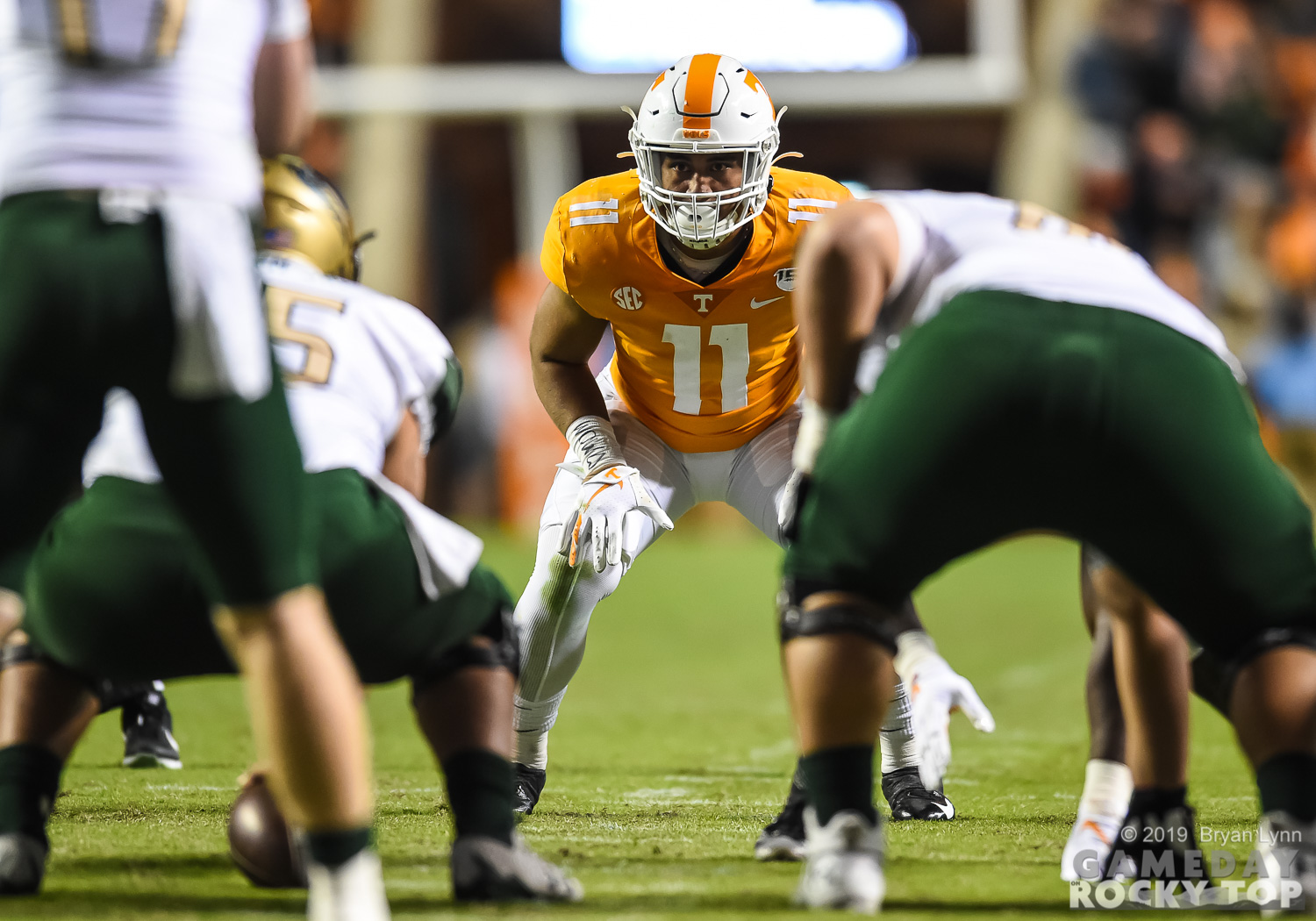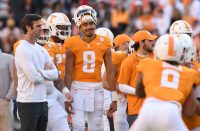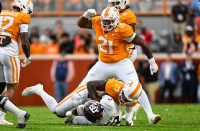The answer may surprise you!
When we get excited about the 2020 Vols, the conversation usually centers on the offensive line, or the individual breakout potential of sophomores Eric Gray and Henry To’o To’o. But one of our favorite big picture metrics heavily favors the Tennessee defense.
Bill Connelly’s SP+ ratings got a Week 1 update at ESPN.com this week. Tennessee checks in at 19th, with the usual caveat of, “Yeah, but we play five of the Top 11.” The biggest takeaway in the new ratings to me: while Tennessee’s offense is a pedestrian 50th overall, the defense is sixth. Not in the SEC. In the nation. With all 130 teams accounted for.
(A quick reality check here: Georgia is first at 6.8, miles ahead of #2 Oregon at 12.1. So any conversation on, “Does Tennessee have one of college football’s best defenses,” would start with, “After Georgia, of course.”)
It feels like the Vols lost their most productive player in getting to the quarterback (Darrell Taylor), in setting up the defense (Daniel Bituli), and in the secondary (Nigel Warrior). But the strength of Tennessee’s 2019 defense (which finished 19th in SP+) was less about individual accolades – with one notable exception – and more about the basic building blocks the 2020 defense could replicate:
- No big plays. The 2019 Vols finished first in the nation in 30+ yard plays allowed and first in 30+ passing plays allowed (data via SportSource Analytics). Last year Tennessee allowed just 10 plays of 30+ yards. By comparison, in 2016 the Vols allowed 37 plays of 30+ yards.
- Interceptions. Nigel Warrior led the way with four, but Bryce Thompson added three and seven other Vols got one as well. Fifteen interceptions last season was good for 13th nationally, the most for Tennessee since 2014.
- Solid finish all around. In the 2-5 start, Tennessee allowed 5.44 yards per play. In the 6-0 finish, Tennessee allowed 4.51 yards per play, with none of the victims in that streak getting more than five yards per play against the Vol defense.
Even without Taylor, Bituli, and Warrior, can the 2020 Vols follow that same blueprint? The biggest question to answer: who gets to the quarterback? Darrell Taylor had 8.5 of Tennessee’s 34 sacks, also their highest total since 2014. The Vols seem unlikely to put a pass rusher in the first two rounds of the 2021 NFL Draft. Can a committee replace some/all of that production?
On the other hand, there’s also room for improvement. Tennessee was average on third down last year, allowing a conversion on 39.34% of opponent attempts, 68th nationally. A year ago yesterday, Georgia State went 10-of-17 on third down against the Vols. Alabama went 6-of-10 in Tuscaloosa before we even throw in the referees; Georgia was 5-of-11. But again in the winning streak, Tennessee made significant strides: South Carolina went 4-of-18, Missouri 4-of-15, Indiana 4-of-13. There’s a whole chunk here about the quality of offense the Vols faced in that winning streak. But if we’re finding nice things to say about the new SEC schedule, outside of Alabama the Vols won’t face anything like the Oklahoma offense we lost.
If Jeremy Pruitt, Derrick Ansley, and the defensive staff continue to get improvement from the returning pieces, the Vols could keep doing those building blocks well while finding critical improvement on third down. The sack totals will probably come down without Darrell Taylor, but the defense overall could still be noticeably better in 2020. Be great again at taking away explosive plays, create turnovers in similar fashion, and improve on third down? That’s the makings of a great defense.
We don’t often outright credit the defense for individual wins at the end of last year, not beyond a goal line stop at Kentucky that probably doesn’t get enough praise. And maybe enough upperclassman star power was lost to not make us think of it as a unit that can go out there and win games by itself. But if we’re looking for realistic versions of how the Vols make significant progress in 2020? A defense that leads the way might be more of a factor than we’re giving it credit for.




